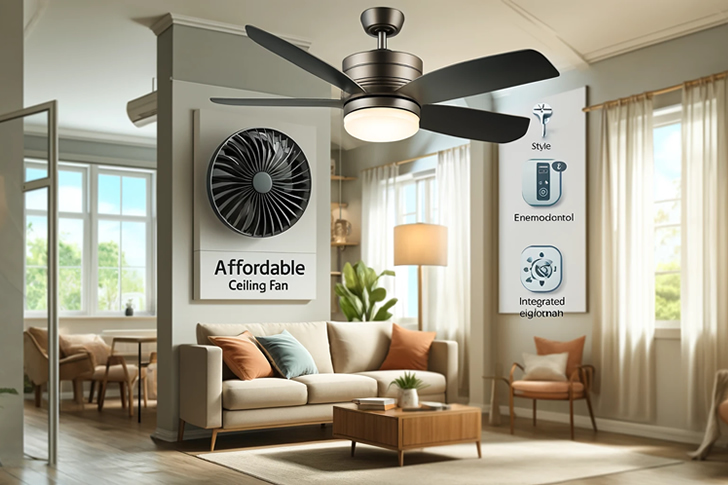How to Find Budget-Friendly Ceiling Fans in the US
Finding affordable ceiling fans without compromising quality can be challenging, but it’s possible with the right approach.

Understanding Ceiling Fan Costs
Ceiling fans vary significantly in price, typically ranging from $50 to $500. Factors influencing cost include brand, size, materials, and features such as remote controls, lighting, and energy efficiency. By understanding these factors, you can better navigate the market to find budget-friendly options.
Budget-Friendly Brands and Models
- Hunter: Known for quality and affordability, Hunter offers models like the Hunter Builder Deluxe, priced around $99, which combines style and functionality.
- Harbor Breeze: Available at Lowe’s, Harbor Breeze ceiling fans are cost-effective without sacrificing performance. The Mazon model, for instance, costs about $119 and includes a remote control and integrated light.
- Westinghouse: Offering a range of budget options, Westinghouse fans such as the Comet are priced around $70, providing a good balance of price and quality.
Shopping Tips for Affordable Ceiling Fans
- Compare Prices Online: Websites like Amazon, Home Depot, and Lowe’s often have competitive prices and customer reviews to help you make informed decisions. Tools like price comparison websites can also be invaluable.
- Look for Sales and Discounts: Keep an eye out for seasonal sales, clearance events, and promotional discounts. Major holidays like Memorial Day, Fourth of July, and Black Friday often feature significant price reductions on home improvement products.
- Consider Refurbished or Open-Box Items: Many retailers offer refurbished or open-box ceiling fans at a reduced price. These items are typically in good condition and come with warranties, making them a cost-effective option.
- Check Local Hardware Stores: Smaller, local hardware stores may have competitive prices and personalized service. Additionally, these stores sometimes offer discounts that larger chains do not.
Energy Efficiency and Long-Term Savings
Investing in an energy-efficient ceiling fan can lead to long-term savings on your electricity bill. Look for fans with the ENERGY STAR label, as they use up to 60% less energy than standard fans. According to the U.S. Department of Energy, using ceiling fans can allow you to raise your thermostat by about 4°F without sacrificing comfort, saving up to 30% on cooling costs.
Installation and Maintenance
Installing a ceiling fan yourself can save on labor costs. Most ceiling fans come with detailed instructions and all necessary hardware. If you prefer professional installation, compare quotes from multiple electricians to get the best price.
Regular maintenance ensures your ceiling fan operates efficiently and lasts longer. Clean the blades regularly, tighten screws, and check for any wobbling to prevent wear and tear.
Buying Online vs. In-Store
Online Shopping:
- Pros: Convenience, wider selection, and often better prices.
- Cons: You can’t see the fan in person before purchase and may have to deal with shipping costs.
In-Store Shopping:
- Pros: Ability to see and feel the product, immediate purchase without waiting for shipping.
- Cons: Potentially higher prices and a more limited selection.
Real User Experiences
Reading customer reviews can provide insights into the performance and reliability of different ceiling fan models. Look for reviews that mention durability, noise levels, and ease of installation.
Conclusion
By researching brands, comparing prices, and considering energy efficiency, you can find affordable ceiling fans that meet your needs. Remember to take advantage of sales, consider refurbished options, and read customer reviews to ensure you make a wise investment.







Recent Comments